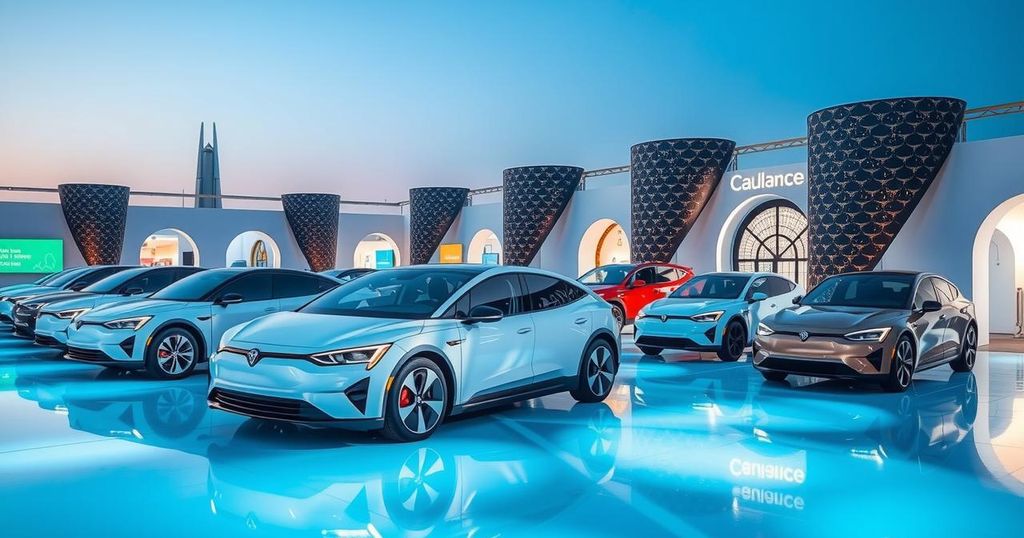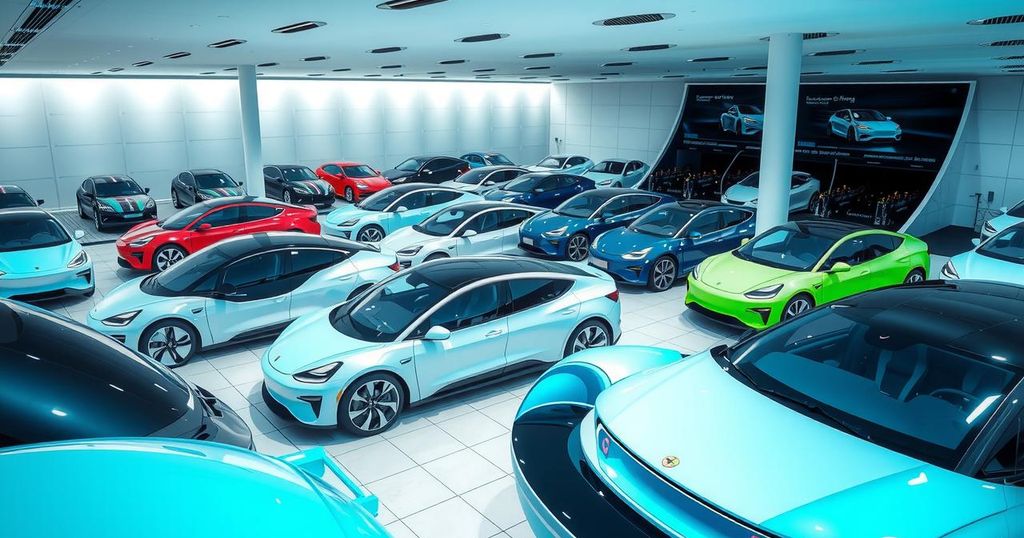Tesla’s Strategic Expansion into Saudi Arabia Amid Sales Challenges
Tesla, Inc. will introduce its electric vehicles in Saudi Arabia on April 10, 2025, amidst declining global sales and competition from manufacturers like BYD. The Saudi market sells around 700,000 vehicles annually, predominantly SUVs, yet only accounts for about 1% EV sales. Despite challenges, government initiatives may bolster EV growth, making Saudi Arabia a strategic entry point for Tesla.
Tesla, Inc. is preparing to enter the Saudi Arabian market by introducing its electric vehicles (EVs) on April 10, 2025. The launch event will highlight Tesla’s EV lineup, featuring demonstrations of autonomous driving technology through the Cybercab and showcasing the Optimus humanoid robot as part of its advancements in artificial intelligence and robotics.
The Saudi Arabian market sees approximately 700,000 new passenger vehicle sales annually, predominantly favoring SUVs. The market is currently led by Toyota with about 30% share, followed by Hyundai/Kia with 25% and a growing presence of Chinese manufacturers claiming a 10-15% market share. Despite this, Tesla faces challenges as EVs currently represent just over 1% of total vehicle sales in the country.
According to a report by PwC, there are obstacles for Tesla in establishing a foothold in Saudi Arabia, as only a few thousand EVs were delivered in 2024. Nevertheless, government incentives such as tax exemptions and a commitment to expanding charging infrastructure may facilitate future growth, positioning Saudi Arabia as a strategic market for Tesla’s entry.
Tesla’s expansion into Saudi Arabia occurs during a period of difficulties for the company. In 2023, Tesla experienced its first annual sales decline as a public entity, with a 1% drop. The company also faces increasing competition from Chinese automaker BYD, which achieved $107 billion in sales for 2024, surpassing Tesla’s $98 billion. Furthermore, BYD’s new ultra-fast charging technology presents a significant challenge, offering 250 miles of charge in just five minutes compared to Tesla’s Supercharger, which provides 200 miles in 15 minutes.
Tesla’s struggles extend to other regions as well. In Europe, sales fell approximately 40% in February compared to the previous year, while the United States has seen a decrease in Tesla vehicle demand due to public perception issues surrounding CEO Elon Musk’s involvement in government. As a result, the prices of used Tesla vehicles are dropping, despite an overall rise in interest for used EVs.
Additionally, vandalism targeting Tesla showrooms and vehicles has escalated, prompting the establishment of an FBI task force to address these incidents. Protests have also taken place at Tesla locations, with demonstrators urging for Musk’s resignation from governmental activities.
As of now, Tesla is rated with a Zacks Rank of 3 (Hold). In contrast, other companies in the automotive sector such as China Yuchai International Limited, Dana Incorporated, and Strattec Security Corporation hold a stronger Zacks Rank of 1 (Strong Buy).
In conclusion, Tesla’s forthcoming entry into the Saudi Arabian market highlights its aspirations amid challenges from declining global sales and increasing competition, particularly from Chinese rivals. While the auto market in Saudi Arabia presents both opportunities and obstacles, government support could foster future growth in the EV sector, necessitating that Tesla navigate its current setbacks effectively to establish a successful presence.
Original Source: www.nasdaq.com




Post Comment